Employees of Dun & Bradstreet at different times included future U.S. presidents: Abraham Lincoln, Ulysses Grant, Grover Cleveland, and William McKinley.
About Us
Interfax-Ukraine is the exclusive representative in Ukraine of the American company Dun & Bradstreet, a global leader in the market of information about legal entities.
Dun & Bradstreet, founded in 1841, helps businesses establish partnerships, conduct effective marketing, manage credit risks, and comply with regulatory requirements. Having access to the global database of Dun & Bradstreet, specialists can obtain standardized information on practically any company, no matter in which country it is registered.
For many years, experts in the field of risk assessment, marketing, and finance have trusted Dun & Bradstreet for all the most important business decisions. The UN, the European Commission have recognized Dun & Bradstreet as an official information provider. In the USA, obtaining a DUNS number, a unique identifier of legal entities created by Dun & Bradstreet, which has become an ISO standard, is a mandatory requirement for registering any company. In many countries, Dun & Bradstreet data is officially used to monitor the current state of various economic indicators, assess the effects of crises, and natural disasters.



Interesting Facts About Dun & Bradstreet:
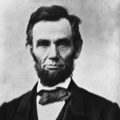
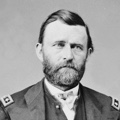
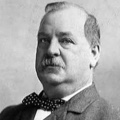
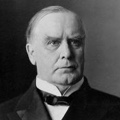
In the photo is the famous actress Marilyn Monroe. A poster for the movie 'How to Marry a Millionaire' (1953). She seeks her future husband using the D&B Reference Book.
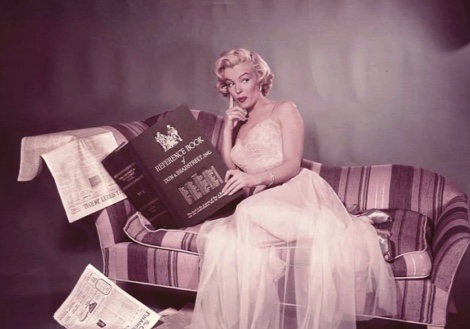
The DUNS number appeared in 1963. Today, the DUNS number is the only global identifier for businesses worldwide.
Dun & Bradstreet has always been and remains at the forefront of technical progress. Dun & Bradstreet was one of the first global corporations to introduce the telegraph, telephone, typewriter, and later the computer. In the era of automation and the Internet, all Dun & Bradstreet products are available online from anywhere in the world. Through the Data Integration Toolkit gateway, large enterprises integrate Dun & Bradstreet data with their corporate systems.
The Origin of
Business Information
In almost every industry, there is someone (a company or a person) who was the first, led the industry, and became its symbol. In the field of company information (business information, using Western terminology), there were even three such figures — Tappan, Dun, Bradstreet.
It all happened as follows. More than 175 years ago, American merchant Lewis Tappan had the idea to organize the Mercantile Agency, effectively a prototype of modern credit bureaus and even, in some ways, financial intelligence.
The agency's task was to collect and analyze information on entrepreneurs' creditworthiness. At that time, the USA was experiencing a real economic boom, many companies had the opportunity to enter the national market. However, communications were not sufficiently developed, creditors often had to embark on lengthy trips themselves to see for themselves the existence of a particular company or the property offered as collateral.
Tappan created a correspondent network that collected this information on-site. This relieved the employees of Tappan's firm from lengthy business trips.
The agents were trusted individuals, bank cashiers, salespeople, lawyers — anyone who could have unbiased friendly relations with local traders, lawyers, and company owners, could become a correspondent for the firm. Centrally, all reports were collected at the company's New York branch, where customers could, like in a library, familiarize themselves with ready-made reports for a fee or order new ones.
Following the type of Tappan's agency, several 'commercial intelligence' agencies emerged in industrial America, but all of them soon went bankrupt.
From Mercantile to Dun
In the meantime, Tappan's agency flourished and expanded. In 1843 and 1845, it opened branches in Boston and Philadelphia. In 1849, Tappan transferred the company's management to one of his subordinates, Benjamin Douglas, a young New York businessman. Douglas managed the company with Tappan's brother Arthur until 1859. During this time, the network of offices was expanded, and new means of communication, which then began to develop in the USA, were used in the delivery of reports.
In 1859, Douglas's brother-in-law Robert Graham Dun took over Mercantile Agency and renamed the company R.G. Dun & Company. That same year, the company issued its first creditworthiness directory of companies — The Dun Book.
After the end of the Civil War in the USA, the country's economy grew rapidly, which greatly facilitated the expansion of R.G. Dun & Company's business. The firm opened new offices, spreading across the country. By 1891, Dun had 126 branches in the USA.
The firm opened its first foreign office in London in 1857, and by the end of the century, it had added another 5 foreign branches: in Glasgow, Paris, Melbourne, Mexico, and Hamburg. By the 1930s, R.G. Dun had opened more than 40 foreign divisions in Europe, South Africa, and Latin America.
The second part of the future giant
And here we need to go back 80 years, to 1849. That year, when Lewis Tappan handed over the management of his company to his young subordinate Benjamin Douglas, in the city of Cincinnati, Ohio, another American — John Bradstreet — created his credit agency, which soon became a serious competitor to Mercantile Agency.
Bradstreet was a lawyer and merchant, among his ancestors were the governor of Massachusetts and the famous American poetess Anne Bradstreet at that time. John Bradstreet dealt with company liquidation cases, and thus a large volume of credit information fell into his hands. He decided to start a business similar to Tappan's company. In 1855, he moved to New York and challenged Mercantile Agency. Two years later, his firm began issuing a biannual directory with credit information, which turned out to be larger than The Dun Book.
The two companies fiercely competed for almost 80 years until, in 1933, in the midst of the Great Depression, they merged, forming the largest credit agency in the USA — Dun & Bradstreet.
From Dun & Bradstreet correspondents to presidents
Over the course of its existence, Dun & Bradstreet has been a launching pad for many famous Americans. For example, four future American presidents — Lincoln, Grant, McKinley, and Cleveland — once worked as correspondents for Dun & Bradstreet. There is no doubt that the information and connections they accumulated were very useful for their political activities. Grateful descendants appreciated their contribution to US history, immortalizing them on American banknotes: Lincoln on the $5 bill, Grant on the $50, Cleveland on the $500, McKinley on the $1000 bill.
Many well-known companies in related fields, such as the rating agency Moody's, the marketing company A.C. Nielsen, and the high-tech market marketing agency Gartner Group, were divisions of Dun & Bradstreet. As part of Dun & Bradstreet, they became world leaders in their market sectors and remain so now, operating as independent public companies.
Leader today
Today, Dun & Bradstreet has offices in 90 countries, with a correspondent network in more than 200 countries. The Dun & Bradstreet database is unparalleled in size (over 300 million companies), based on a unique technology for standardizing and verifying data, as well as on its own global business identification system (DUNS number).
The DUNS number is a company identification code that remains unchanged until the legal entity is liquidated. First appearing in 1963, it is today the only universally recognized identifier for companies worldwide.
In the USA, assigning a DUNS number is a mandatory condition for registering a legal entity. A company in any country in the world, without this number, will not be able to start negotiations with most international organizations.
According to representatives of many Western companies, a call to their office from a person who introduced themselves as a correspondent of DUN & BRADSTREET makes them internally straighten up and take the moment seriously.
